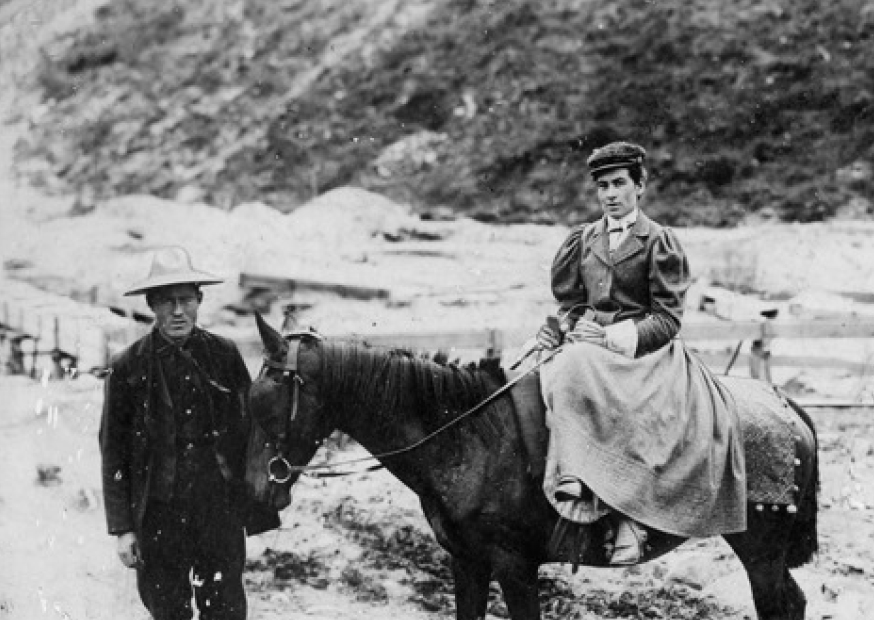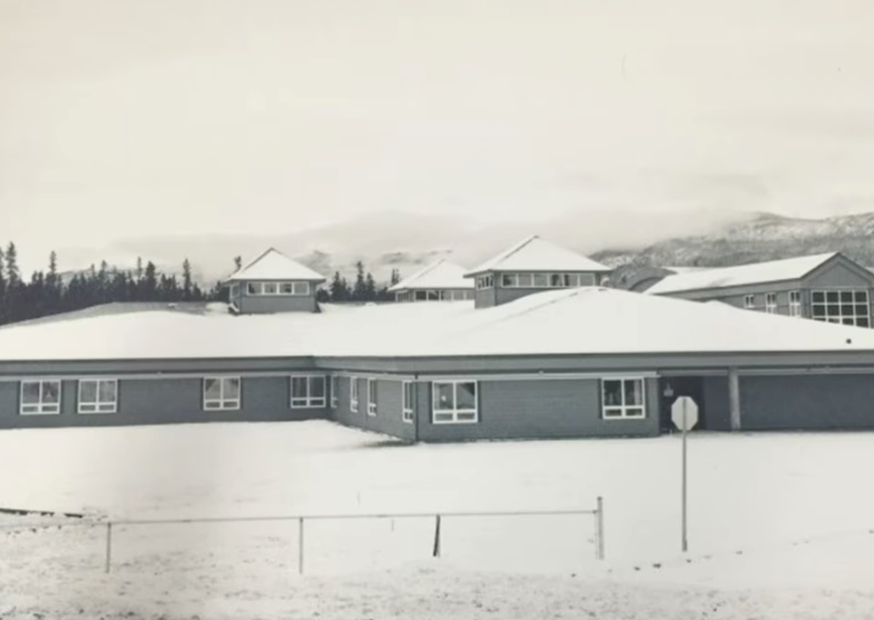She was one of the first non-Indigenous women to accompany her husband into the territory, and is believed to be the first white woman to cross the famous Chilkoot Pass.
Following in her husband’s footsteps, she set off on an 8,000-kilometer journey to the Yukon. She was the first non-Indigenous woman to accompany her husband into the territory, and is believed to be the first white woman to cross the Chilkoot Pass. This 1,067-meter-high mountain pass, beginning at Dyea at the tip of the Lynn Canal, crosses the Coast Range between Alaska and British Columbia.
After they settled in Dawson City, it became clear that living conditions in the Yukon were as harsh as they were rudimentary. Fortin-Tremblay was initially assigned the role of nurse, then, with the gradual arrival of other women, she became one of the Yukon’s first settler midwives. Her social commitment and generosity set her apart and made her a beloved figure in the burgeoning community.
She developed a type of market gardening that enabled her to grow vegetables on the roof of her home, as the permafrost made traditional cultivation techniques much more difficult. She later opened a general store in Dawson called Mme Tremblay’s Store, which still stands downtown and is a listed historic building.
Pierre Nolasque Tremblay died in 1935; she remarried in 1942 to Louis Lagrois, another French-Canadian gold prospector. She died in 1949 in Victoria, British Columbia, at the age of 77.
The first French-speaking school in the Yukon, established in 1984 in Whitehorse, bears her name. Quite a legacy for a very remarkable woman!
Sources:
https://francophoniedesameriques.com/
https://shistoriquesaguenay.com/
FRENCH/FRANCAIS:
Émilie Fortin-Tremblay est née à Alma, au Québec. Lors de l’exode massif des Québécois au XIXe siècle, elle déménage avec sa famille dans l’État de New York. C’est là, en décembre 1893, qu’elle rencontre et épouse Pierre Nolasque Tremblay, un prospecteur d’or canadien-français.
Suivant les traces de son mari, elle entreprend un périple de 8 000 kilomètres jusqu’au Yukon. Elle est la première femme non autochtone à accompagner son mari dans le territoire et la première femme blanche à franchir le col de Chilkoot. Ce col, haut de 1 067 mètres, traverse la chaîne côtière entre l’Alaska et la Colombie-Britannique.
Les conditions de vie au Yukon sont aussi rudes que rudimentaires. Émilie Fortin-Tremblay se voit confier le rôle d’infirmière, puis, avec l’arrivée progressive d’autres femmes, celui de sage-femme. Son engagement social et sa générosité la distinguent.
Elle a développé un type de culture maraîchère qui lui a permis de cultiver des légumes sur le toit de sa maison, le pergélisol empêchant la culture traditionnelle. Elle a ensuite ouvert un magasin général à Dawson, appelé Mme Tremblay’s Store, aujourd’hui classé monument historique.
La première école francophone du Yukon, établie en 1984 à Whitehorse, porte son nom.
Légende de l’image : Elle est la première femme non autochtone à accompagner son mari sur le territoire et la première femme blanche à franchir le col de Chilkoot.




